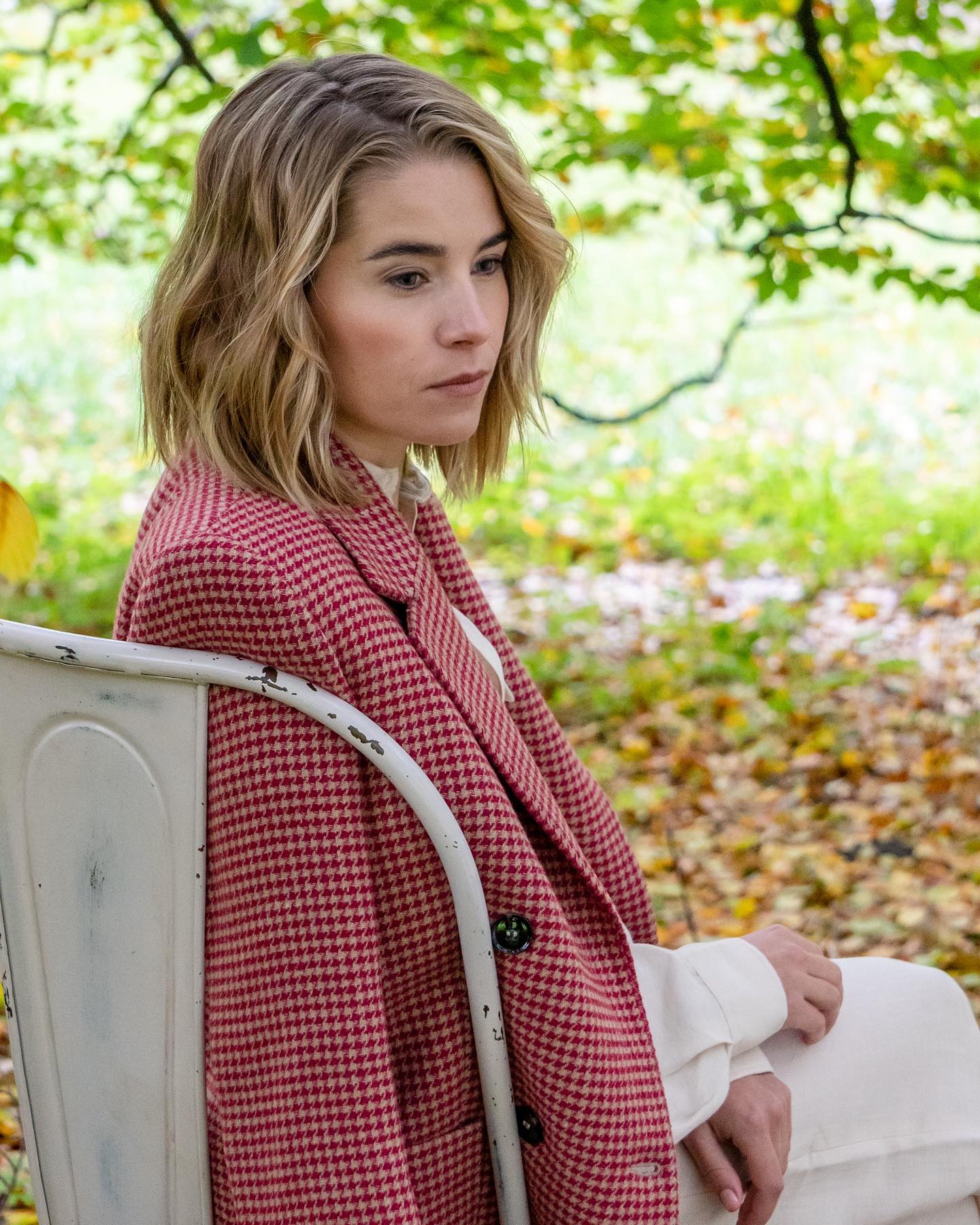Introduction to hair bleaching
Bleaching is a popular technique used to lighten natural hair color. This chemical process can transform your look, allowing you to experiment with lighter hair tones or even bright colors. However, before embarking on bleaching, it's essential to understand why hair bleaching can be beneficial and what precautions to take to minimize potential damage.
Why bleach hair?
Aesthetic reasons
Hair bleaching can help you achieve a totally different look. Here are some aesthetic reasons why people choose to bleach their hair:
- Change of style: Switching to a lighter shade can revive and modernize your appearance.
- Experimenting with colors: Bleached hair makes it possible to apply a wide range of dyes, from soft pastels to vibrant hues.
- Feature enhancement: A lighter color can harmonize better with certain facial features, making the look brighter.
Practical reasons
Aside from aesthetics, there are practical reasons why you may want to bleach your hair:
- Compatible with extensions or wigs: If you use extensions or wigs, bleaching can help achieve a more even color match.
- Preparation for other treatments: Bleaching is often used as a preparatory step before other hair treatments, such as bright color dyeing or balayage.
Precautions before bleaching
Allergy test
Before bleaching your hair, it's crucial to perform an allergy test. Bleaching products contain powerful ingredients that can cause allergic reactions. To perform an allergy test:
- Apply a small amount of product: Put a little behind your ear or on your wrist.
- Wait 24 to 48 hours: Watch for any signs of reaction, such as redness, itching or swelling.
If a reaction occurs, refrain from bleaching your hair and consult a professional.
Hair condition assessment
It's also important to assess the condition of your hair before bleaching. Bleaching can be particularly damaging to certain hair types. Here are a few steps to assess the condition of your hair:
- Identify hair porosity: Highly porous hair quickly absorbs chemicals, which can lead to over-absorption and damage.
- Check for signs of damage: Hair that is dry, brittle or damaged by other chemical treatments needs special attention.
- Consult a professional: For an accurate assessment and personalized advice, it is often best to consult a hairdresser.

Choosing the right bleach
Selecting the right bleaching product is a crucial step in successfully changing your look while preserving the health of your hair. There are a variety of products, formulations and techniques that can be adapted to different hair types and objectives. Here's how to make the right choice for your specific needs.
Understanding the different types of products
Natural products
Natural products are an increasingly popular option for those wishing to minimize the chemical impact on their hair. Natural ingredients such as honey, lemon and chamomile are known for their lightening properties.
- Honey: Used as a mask, honey can gently lighten hair thanks to its natural enzymes.
- Lemon : Lemon juice applied and exposed to the sun can lighten hair, although this is a slower method.
- Chamomile : Chamomile infusions applied to the hair can also gradually lighten it.
These methods are much less damaging to the hair, but require more time and several applications for visible results.
Chemical products
Chemical products offer faster, more spectacular results, but they are also more aggressive. Most of these products contain hydrogen peroxide or ammonia, which work by breaking down the hair's natural pigments.
- Cream bleaches : Easy to apply and often infused with moisturizing ingredients to reduce damage.
- Powder bleaches : Used mainly in salons, these products are powerful and require precise application to avoid damage.
- Ammonia-free bleaches : Less aggressive on the scalp, they produce slightly less intense results.
Although chemical products are effective, they require special care when used to prevent hair damage.
How to choose according to your natural color and hair type
Blonde hair
Blonde hair, which is naturally lighter, requires less effort to achieve even lighter tones. They respond well to natural products like honey and chamomile. However, for faster results, a cream bleach can be used.
- Recommended products : Natural products or ammonia-free cream bleaches.
- Precautions : Avoid very strong bleaches that could damage fragile hair fiber.
Brown and black hair
Dark hair often requires more powerful chemicals to achieve significant lightening. They may resist natural lighteners, but will respond well to powder or cream bleaches.
- Recommended products : Cream or powder bleaches with a high percentage of hydrogen peroxide.
- Precautions : Perform a strand test to assess the application time required and avoid uneven fading.
Red hair
Red hair has a particularity: it contains a large amount of red pigments, making it more difficult to bleach evenly. However, it reacts fairly well to chemicals with specific formulations to neutralize copper tones.
- Recommended products : Cream or powder bleaches with a copper-tone neutralizer.
- Precautions : Investigate products containing neutralizing agents to avoid unwanted reflections.
Ultimately, choosing the right bleaching product requires a careful evaluation of the following factors
See also: How to cut curly hair
The process of bleaching hair at home
Home hair bleaching can be an economical and practical option if you follow the steps correctly and carefully. It's essential to prepare your hair properly and follow a detailed process to minimize the risk of damage. Here's a step-by-step guide to successful at-home hair bleaching.
Preparing for the bleaching process
Surface and clothing protection
Before you start bleaching, prepare your work area and protect your clothes to avoid permanent stains. Here are a few tips to help you prepare:
- Surface protection: Cover the surfaces around you with towels or old blankets to avoid product stains.
- Protective clothing: Wear old-fashioned clothes or a hairdressing apron. Use plastic gloves to protect your hands.
- Scalp care: Apply Vaseline or a similar product around the hairline, ears and neck to avoid irritation.
Performing a wick test
A strand test is a crucial step in understanding how your hair will react to the bleaching product. Here's how to do it:
- Wick selection: Take a small section of hair from a less visible area, such as behind the ear.
- Product application: Apply a small amount of bleach to the strand and wait for the recommended exposure time.
- Analysis of results: Rinse and evaluate the strand for color and condition. Adjust setting time if necessary.
These precautions will help you anticipate the results of complete bleaching and avoid unpleasant surprises.
Product application
Product mixing
Follow the instructions on the packaging to mix your bleach correctly. Incorrect mixing can compromise results and seriously damage your hair.
- Ingredients required: You'll usually need a bleaching product (powder or cream) and an activator (peroxide).
- Proportions: Follow the proportions indicated on the packaging, often one part powder to two parts peroxide.
- Mixture: Use a non-metallic bowl and a spatula to blend the ingredients to a smooth, creamy texture.
Applying the product to the hair
Apply the product evenly to ensure uniform discoloration. Here are some important steps:
- Hair sectioning: Divide your hair into four sections to facilitate even application.
- Start of application: Start with the tips and work up to the roots, as the tips tend to discolor more slowly.
- Ensure even distribution: Use an application brush and make sure each strand is saturated with product.
- Laying time: Leave the product to work for the recommended time, regularly monitoring color development.
Rinsing and post-treatment
Product rinsing
Once the application time has elapsed, rinse the product thoroughly to minimize damage and prepare your hair for post-colouring care:
- Warm water: Use lukewarm water to rinse your hair thoroughly until the water runs clear.
- Specialized shampoo: Use a specific hair shampoo

Care and maintenance after bleaching
Why is after-care important?
Bleaching can weaken the structure of your hair, leaving it dry and brittle. Appropriate care is therefore essential to restore health, shine and strength.
Use of moisturizing and repairing products
Here are some essential products and practices to care for your hair after bleaching:
- Nourishing hair masks: Use specific masks for damaged hair once or twice a week. Masks containing keratin, natural oils or hyaluronic acid are highly recommended.
- Hair oils: Apply oils such as argan or coconut oil to help restore moisture and shine.
- Moisturizing conditioners: Choose nutrient-rich conditioners to seal in moisture after each wash.
Specific shampoos
Using the right shampoos can make a big difference in the health of your bleached hair:
- Gentle shampoos: Choose sulfate-free shampoos to avoid further drying out your hair.
- Blue or violet shampoos: These shampoos help neutralize yellow or copper highlights after bleaching.
Professional treatments
Regular visits to the hairdresser
We strongly recommend that you consult your hairdresser regularly for professional treatments:
- Keratin care: These treatments can help strengthen and smooth your hair, reducing breakage and frizz.
- Regular cut: Trimming the tips every 6 to 8 weeks helps prevent split ends and maintain the shape of your cut.
Intensive treatments
- Hair reconstruction: Some salons offer rebuilding treatments that penetrate deep into the hair fiber to repair damage.
- Intensive moisturizing care: Steam treatments or ultra-moisturizing masks can deeply rehydrate hair.
Practical tips for maintaining bleached hair
Minimize heat use
Frequent use of heat can aggravate the damage caused by discoloration:
- Air drying: Let your hair air-dry as much as possible.
- Heaters with thermal protection: If you must use heating equipment, always apply a thermal protector.
A balanced diet
Good nutrition also contributes to healthy hair. Include foods rich in protein, omega-3s, vitamins A and C, and iron to promote hair growth and strength.
FAQs
Is hair bleaching permanent?
Yes, bleaching permanently alters the pigment structure of your hair. To regain your natural color, you'll need to wait for your hair to grow back.
Can I bleach my hair without damaging it?
It's difficult to avoid damage altogether, but by taking precautions and intensively caring for your hair after bleaching, you can minimize the damaging effects.
How long should I wait between bleaching sessions?
It's generally advisable to wait at least 4 to 6 weeks before bleaching again, to give your hair time to recover.





